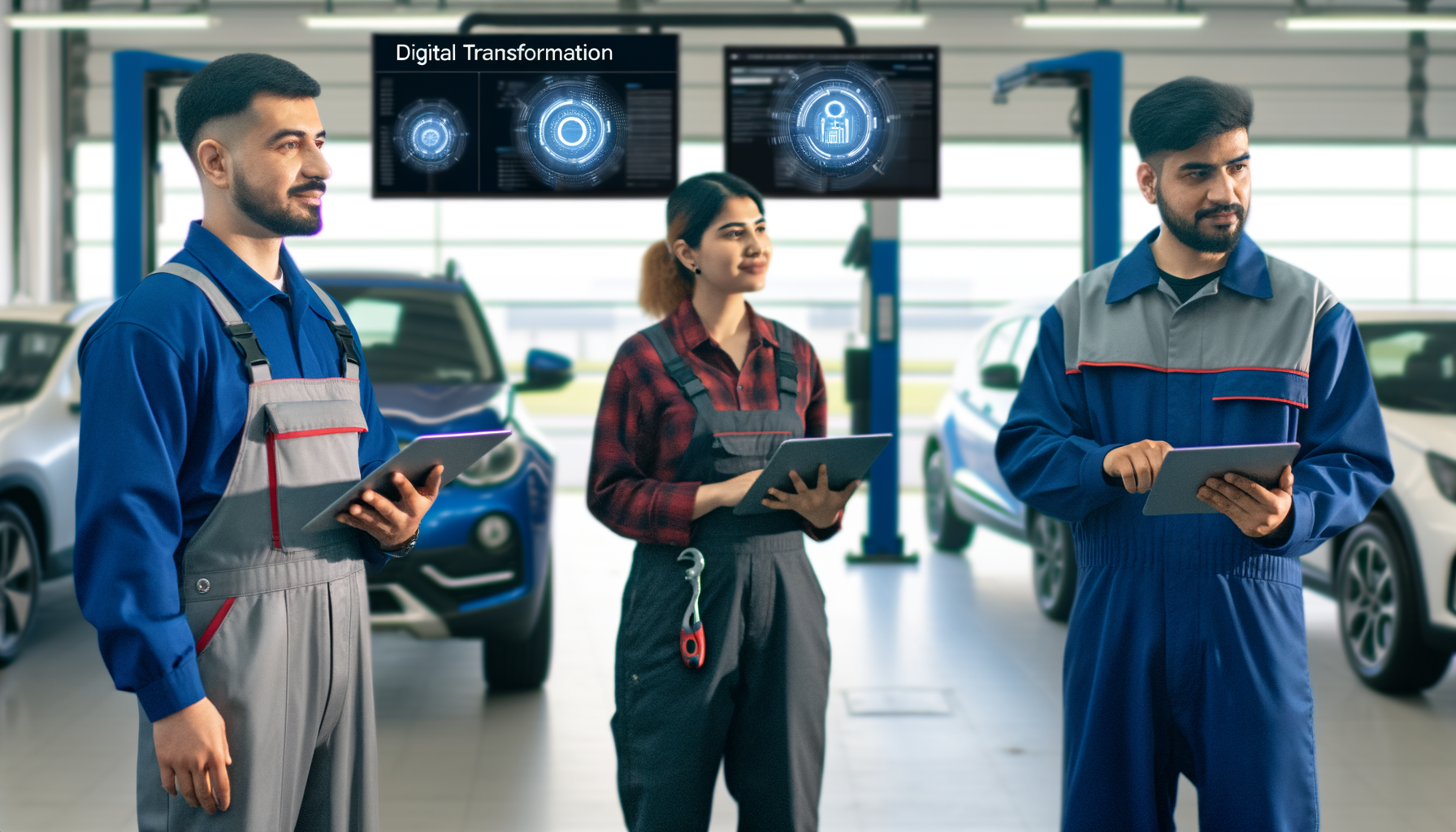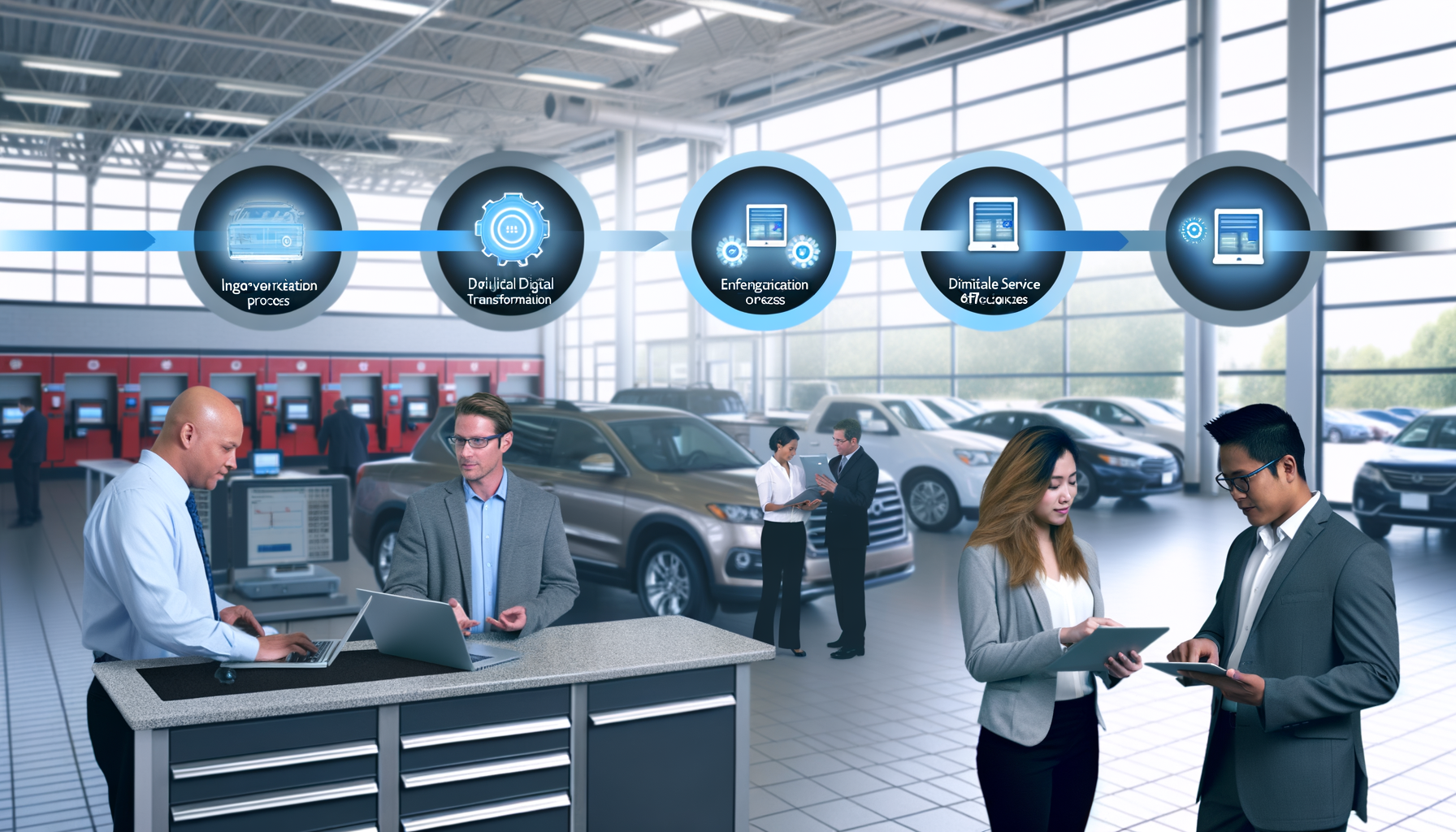Quantum Leap: Redefining Automotive Service for the AI-Driven Era

Understanding Digital Transformation: Beyond the Buzzword

Digital transformation encompasses integrating digital technology into all areas of business, fundamentally changing operations and delivering value to customers. For auto dealership service departments, this means leveraging technology to enhance productivity, streamline processes, and improve customer interactions.
Recent studies show that 68% of customers prefer digital service scheduling, yet many dealerships lag in digital adoption. The reasons range from perceived high costs to staff resistance to change.
To overcome these hurdles, leaders must champion a culture of innovation, emphasizing the long-term benefits of digital integration over short-term inconveniences.
Key Technologies Revolutionizing Service Departments

From AI diagnostics to IoT-enabled tools, emerging technologies are setting new benchmarks in efficiency and accuracy. Software solutions like Auto Pro Solutions offer integrated platforms for scheduling, CRM, and inventory management, essential for a seamless digital transition.
Case Study: A Midwest dealership saw a 20% increase in service throughput by implementing AI-driven diagnostic tools, reducing diagnostic time by 30%.
To start, evaluate your current technology landscape. Identify bottlenecks that could benefit from automation or software solutions. Engage with vendors to explore tailored solutions that align with your operational needs.
Implementing a Seamless Digital Service Workflow

A seamless workflow involves integrating digital tools into every step of the service process, from booking to post-service follow-up. This not only increases operational efficiency but also enhances the customer experience.
Begin by mapping out your current service workflow. Identify stages where digital tools can reduce friction or enhance data accuracy. For example, implementing a digital parts inventory can significantly cut down on processing delays.
Step-by-step Implementation: 1) Conduct a workflow audit. 2) Select and set up digital tools. 3) Train staff on new processes. 4) Monitor performance and adjust as needed.
Overcoming Common Digital Transformation Challenges

Resistance to change is a significant barrier to digital transformation. It's crucial to communicate the long-term benefits and provide adequate training to ease transitions.
Another challenge is aligning digital tools with traditional processes. For instance, transitioning to digital parts inventory requires coordination between suppliers and service teams.
Proactively address these challenges by appointing a digital transformation lead, and establishing clear communication channels for feedback and support.
Measuring Success: Evaluating ROI in Digital Transformation

Evaluating the ROI of digital transformation involves more than just financial metrics. Consider customer satisfaction, process efficiency, and staff productivity as key indicators.
Hypothetical Data Insight: Dealerships that adopted digital scheduling saw a 15% increase in repeat service bookings within the first year.
Utilize analytics tools to track these metrics. Regularly review data to identify improvement areas and adjust strategies accordingly.
Future Trends: What’s Next for Dealership Service Departments

The future of dealership service departments is poised for further transformation with advancements in autonomous diagnostics and predictive maintenance.
OEMs are increasingly requiring dealerships to adopt specific training and tools, necessitating a proactive approach to digital integration.
To stay ahead, continuously monitor industry trends and invest in scalable technologies that can adapt to future needs.
Related Topics
Ready to take your service department to the next level?
Schedule your demo today and experience the power of Auto Pro Solutions.
Schedule Demo